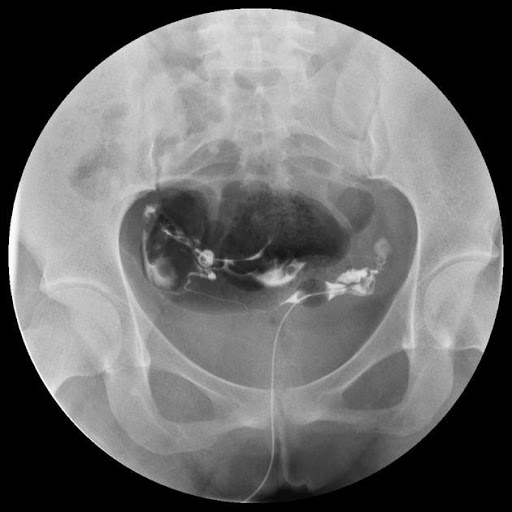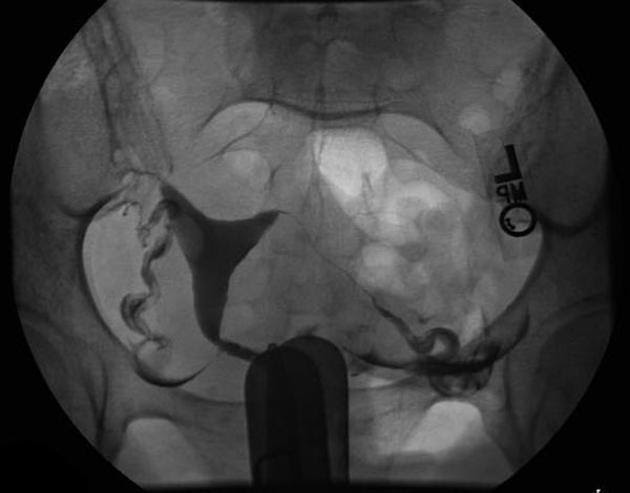

HSG (hysterosalpingography) is an x-ray test used to view your reproductive organs. This can help diagnose why you are unable to get pregnant. During the procedure, a radiologist (doctor who specializes in the use of x-rays) takes images as a contrast dye flows through the uterus and fallopian tubes. HSG usually takes less than 30 minutes. You can often go back to your normal routine within a short time.
Getting ready for hysterosalpingogram (HSG)
The procedure will be scheduled shortly after the end of your menstrual period. When you schedule your test, tell the staff if you have allergies to iodine contrast.
You may be asked to provide a list of your medications. You may want to arrange for a ride home after the procedure. In some cases, you’ll be given antibiotics to take before and after the test.
A day or two before the exam, your healthcare provider may ask you to:
- Avoid sexual intercourse.
- Stop using creams or other vaginal medications.
- Avoid douching.
- Take over-the-counter pain medications a few hours before the test.
During HSG
- You will be asked to lie on an x-ray table with your knees bent—much like a Pap test. A preliminary x-ray of your pelvis may be taken. An instrument called a speculum is inserted into the vagina to hold it open. The cervix may be numbed. Then a catheter (thin tube) is guided through the cervix and into the uterus. In some cases, the cervix is first dilated to widen the cervical opening.
- The radiologist will position the x-ray machine over your abdomen. Then contrast dye is injected through the catheter. The dye may stretch the uterus and tubes, causing some cramping or pain. As the dye flows through the uterus and tubes, x-rays are taken and displayed on a monitor.
- You may also be asked to change positions and to hold your breath. It is normal for some dye to spill out of the tubes and be absorbed by the body. The rest may appear later as vaginal discharge.
After the Procedure
- If you feel lightheaded or dizzy, let the radiographer know and you can rest on the table until you’re ready to get dressed.
- You will likely have a thick discharge as some of the dye drains out of the uterus. Use pads, not tampons, until the discharge is gone. A pad will be given to you before you leave.
- For a few hours you may feel some cramping. This can usually be relieved with over-the counter pain medications, if approved by your doctor. You may be told not to have sexual intercourse or douche for a day or two.
Follow-Up
- After the radiologist has studied the x-rays, your doctor will talk with you about the results of your HSG. This may be later the same day or during a follow-up appointment.
Getting Help
You may contact Imaging Department at
Tel: +603-56391433 / 019-2000106 during office hours for assistance.

